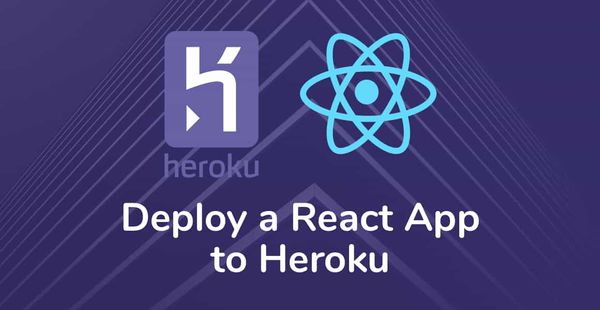Methods to prioritize features for your MVP
Do you have a brilliant product idea that you believe could change the game, but you're not quite sure how to make it a reality?
Or you're a business owner who wants to explore new markets without investing significantly. Launching a Minimum Viable Product (MVP) can solve your problems!
Think of an MVP as a test drive for your product - it includes only essential features that require minimal resources, time, and effort to develop. An MVP allows you to see how your idea performs in the real world and identify any areas that need improvement. With this information in hand, you can go back to the drawing board and develop a fully-fledged product that meets the needs and expectations of your customers.
Also read: Building MVP
But how do you know which features to include and which ones to leave out? This is where things get interesting. It's impossible to include all of them; therefore, it's essential to identify the ones that will be part of a trial product release. Let's explore how to categorize and prioritize MVP features and learn more about the popular product feature prioritization models.
Why prioritize MVP features?
Did you know that 42% of startups fail due to a lack of market need for their product?
Prioritizing MVP features is crucial because it helps companies avoid spending too much time and resources on non-essential features. Instead, it allows them to focus on developing the core functionality of their product and delivering value to customers. By focusing on essential features, companies can speed up the release of their MVP, receive user input, and make rapid improvements to their products.
Defining Features for MVP
MVP Feature Prioritization is critical to the success of your MVP. Prioritizing features helps you focus on what is most important for launching your product or service. It also allows you to launch your MVP with a clear goal and a plan for future development. To define features for MVP, you should consider the following:
- Define your MVP goals: What problem are you solving? What do you want to achieve with your MVP?
- Identify your target audience: Who are your early adopters? What are their pain points? What features will they find most valuable?
- Create a feature list: List all the potential features for your product or service.
- Prioritize your feature list: Prioritize your feature list based on the importance of each feature to your MVP goals.
There are a few key criteria that can be used to prioritize MVP features:
- Value: Features that are essential to delivering value to users should be given high priority.
- Feasibility: Features that are technically feasible and can be developed within the given timeline and budget should be prioritized.
- Differentiation: Features that differentiate the product from competitors should be given priority.
- Impact: Features that significantly impact user experience should be prioritized.
Widely known MVP feature prioritization methods
There are several MVP feature prioritization methods, but we will discuss the most popular ones:
MoSCoW Method
The MoSCoW method is a popular prioritization technique that allows you to focus on the most critical features of your MVP while keeping the development cost and time in check. "MoSCoW" stands for Must have, Should have, Could have, and Won't have. Here is a breakdown of each category:
- Must have: These are the features that are essential for your product to function. Without these features, your product could not solve the problem it was designed for. Must-have features are non-negotiable and must be included in your MVP.
- Should have: These features are important but not essential for your product to function. Should-have features add value to your product and enhance the user experience. These features should be included in your MVP if time and resources allow.
- Could have: These are the features that are nice to have but not critical to the success of your product. Could-have features can be added in future releases of your product. You can include them if there is enough time and resources left after including the must-have and should-have features.
- Won't have: These are the features you have decided not to include in your MVP. These features may be too costly or time-consuming to develop, or they may not be relevant to your target audience.
Also read: Cost to build an MVP
Kano Model
The Kano model is a customer satisfaction framework that helps you prioritize features based on their impact on customer satisfaction. This model helps you identify the features that customers expect, the features that will delight them, and those that will not impact their satisfaction. The Kano model classifies features into three categories:
- Must-haves: These are features that customers expect and are taken for granted. Not including these features will result in customer dissatisfaction.
- Performance attributes: These are features that can directly affect customer satisfaction. The better these features are, the more satisfied the customer will be.
- Delighters: These unexpected features can captivate the customer and surpass their expectations. Including these features can result in increased customer loyalty and satisfaction.
User Story Mapping
User story mapping is a visual way to prioritize your features. This method allows you to create a user story map that shows the user's journey and the features required to complete each step. Here is a breakdown of how user story mapping works:
- Define the user journey: Identify the steps users will take when using your MVP.
- Create user stories: Create user stories for each step of the user journey. User stories are short, simple descriptions of a feature from the user's perspective.
- Prioritize user stories: Prioritize them based on their importance to the user journey.
- Create a user story map: Create a visual map that shows the user journey and the user stories required to complete each step.
- Prioritize the features: The final step is prioritizing the features based on their importance to the user journey. This helps you focus on building the features that are most critical to the user.
Also read: Importance of MVP in Software Development
The user story map helps you prioritize the features that are critical to the user journey and ensures that you focus on building the features that are most important to the user.
Get your MVP built at Logicwind
At Logicwind, we offer MVP services tailored to your specific needs. Our team of experienced developers and designers have expertise in using various MVP feature prioritization methods to identify the most critical features that add value to your product.
With our MVP services, you can be sure you're building a product that meets your users' needs and sets you up for success. Contact us today to learn more about our MVP services and take the first step towards launching your successful MVP!
FAQs
Q: What is feature prioritization in product management?
A: Feature prioritization is like creating a to-do list for a product, but instead of just listing everything, it's about identifying and ranking the important features that should be included in a product.
Q: How do you prioritize features in MVP?
A: Prioritizing features in MVP requires a laser focus on solving the core problem for your users. You need to ask yourself, "What's the most important thing my product should do to provide value to users?" and work backward from there.
Q: How many features should an MVP have?
A: As few as possible! The goal of an MVP is to provide a functional product with the minimum number of features required to deliver value to users. The more features you add, the longer it will take to build and the more complex it will become.
Q: Why should I define and prioritize features for an MVP?
A: Defining and prioritizing features for an MVP ensures that you stay focused on solving the core problem and don't get bogged down by unnecessary features. This helps you to launch your product faster, get feedback sooner, and iterate quickly based on user needs.




